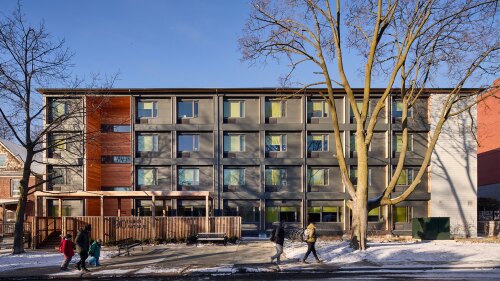This article is republished with permission from REITCafe.
The FTSE NAREIT All Equity REIT average made healthy gains last week, and total returns currently outpace the NASDAQ and Russell 200 Index. Despite these positive figures, real estate investment trust (REIT) returns remain down 7.22 percent during 2016. The freestanding, net lease retail REIT sector, discussed in REIT Café recently, is the only sector with positive returns this year. However, five other REIT sectors stand out for year-to-date total returns that are only slightly negative.
Specialty REITs: Specialty REITs are a catchall sector that includes casinos, prisons, billboards, and farmland. The sector’s year-to-date return of –0.19 makes it one of the best-performing sectors during 2016. Many of the companies in this sector converted to the REIT format in recent years. New entrants to this category will become more limited after legislation that passed in December 2015 removed the tax advantages of spinning off corporate real estate into REITs.
| TREPP-i Survey Loan Spreads (50–59% LTV)* |
| This Week | Previous Week | Previous Month | End 2015 | End 2014 | |
| Industrial | 178 | 178 | 161 | 163 | 138.5 |
| Multifamily | 176 | 178 | 170 | 168 | 139.8 |
| Office | 188 | 181 | 164 | 168 | 148 |
| Retail | 179 | 179 | 165 | 168 | 139.8 |
| Average Spread | 180.25 | 179 | 165.00 | 166.75 | 141.5 |
| 10-year Treasury Yield** | 1.75 | 1.73 | 2.15 | 2.27 | 2.17 |
Shopping centers: The 2015 holiday shopping season made it clear that e-commerce is affecting brick-and-mortar retail. Yet, the majority of consumers still make a trip to the grocery store, drugstore, or dry cleaner. Discount retailers, like T.J. Maxx and Ross, which are frequent tenants of these centers, are performing well, too. REITs that focus on grocery-anchored shopping centers are benefiting from this traffic, which has driven shopping center REIT returns of –0.33 percent so far this year.
Data centers: Growth in the amount of stored data and cloud computing, along with a trend toward outsourcing IT infrastructure, has fueled demand for data centers. Leases for data centers are generally long-term, and larger corporate tenants have strong credit ratings. CBRE reports that the construction pipeline in primary markets is significant, but that more than half of the space underway was pre-leased at year-end 2015. Total returns for the sector have come in at –0.50 in 2016.
Manufactured homes: Strong demand for inexpensive housing and aging baby boomers seeking retirement and vacation homes have helped propel manufactured housing into one of the best-performing REIT sectors, with a year-to-date return of –0.87 percent. Rising rents and home prices are causing more people to consider manufactured housing rather than site-built housing. The housing market recovery has also made it more feasible for snowbirds to sell existing homes and to buy manufactured homes in retirement destinations. The market is supply-constrained and fragmented.
Self-storage: Job and population growth, smaller living spaces with less storage, and the propensity for people to acquire and hold onto belongings have driven demand for self-storage. New construction has been limited, resulting in high occupancy levels and strong rent growth. The month-to-month duration of self-storage leases is attractive to investors in the current low-interest-rate environment, because operators can respond quickly to changes in the market. Total returns for the sector amount to –1.60 percent so far this year.
Seemingly few commonalties stand out between this year’s best performers. Some sectors benefit from short-term leases where rents can be adjusted rapidly, while investors are attracted to other sectors with the security and stability of long-term leases. Similarly, a recovering housing market and higher interest rates drive demand for some REITs, while other sectors are hampered by these same trends. Ultimately, business expansion and job growth support widespread demand for all types of real estate, and limitations on available new supply are helping drive rent growth.
* TREPP-i Survey Loan Spreads levels are based on a survey of balance sheet lenders. For more information, visit Trepp.com.
** - 10 yr. Treasury Yield as of 2/16/2016.




